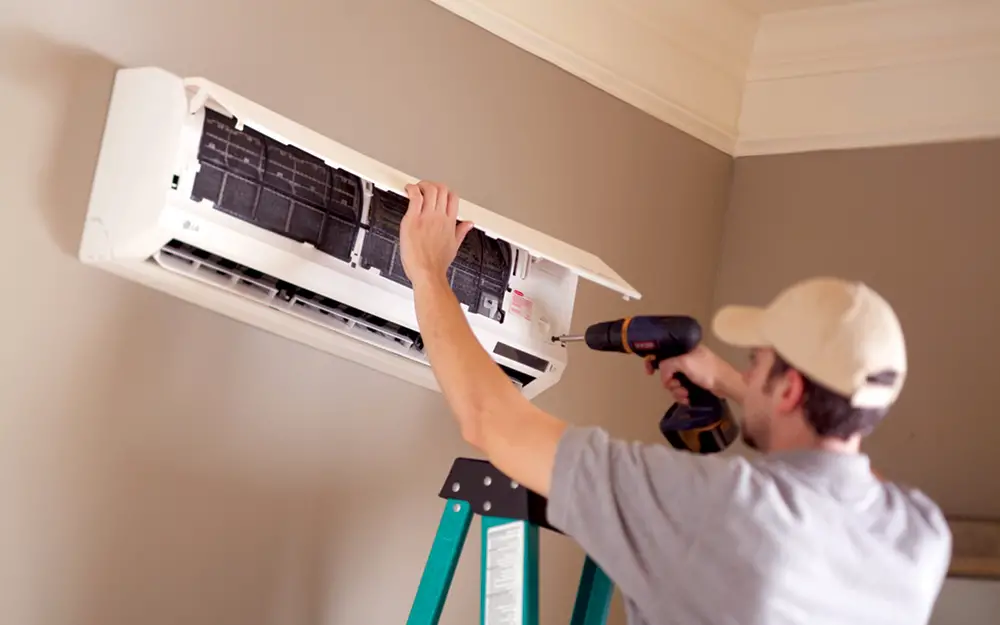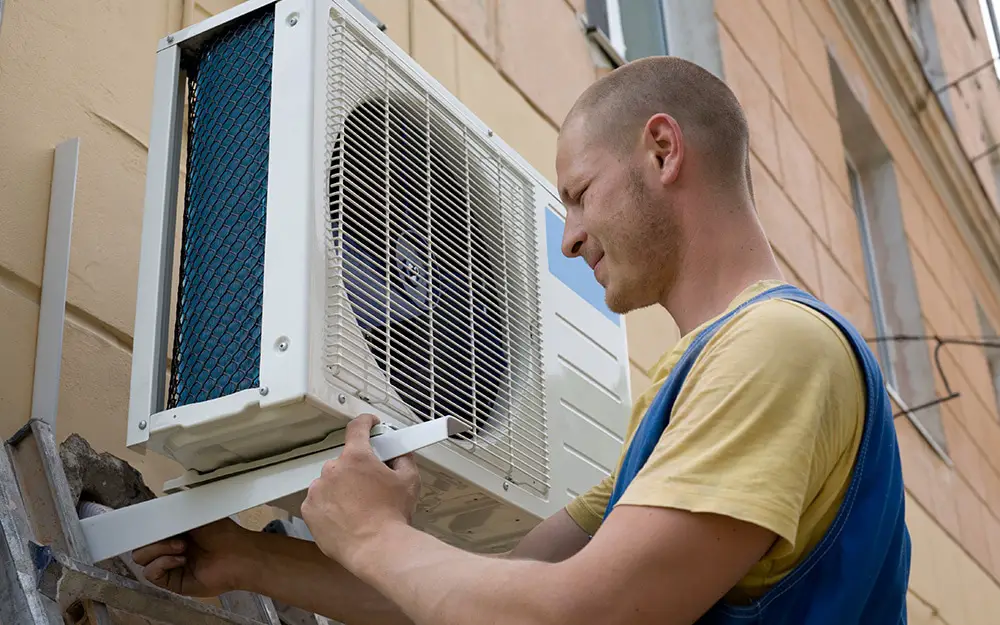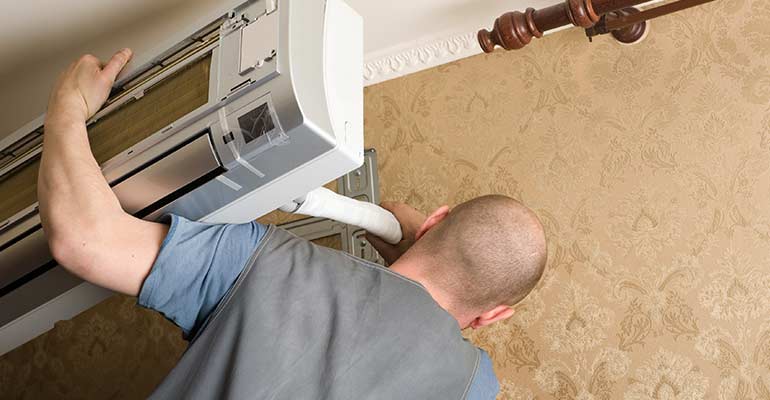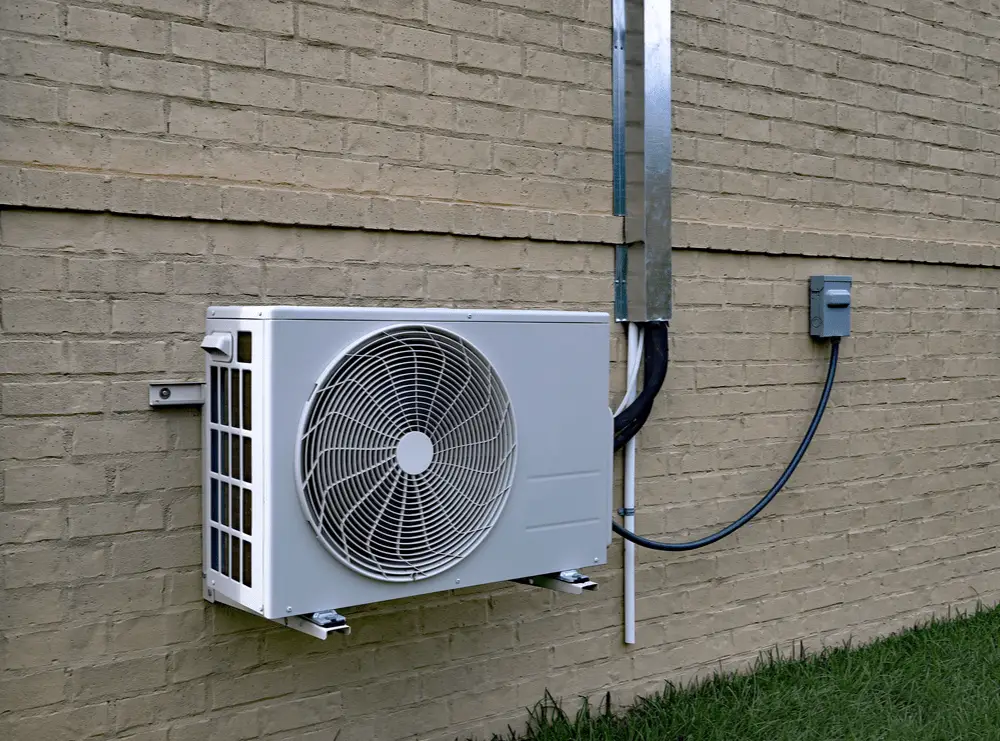Air conditioners are a matter of life quality, depending on where you live. If you live in hot areas, chances are you'll need some of those at some point.
However, they can be expensive and tricky, or even illegal to install.
Make sure you don't take any wrong steps with this guide.

Photo credit: aireserv.com
Quick Questions Before Starting
If you're planning to install a ductless air conditioner or to hire someone to do so, you'll find everything you need to know in this article. In case you're not familiar with the subject, these quick questions below can help you have a clearer picture of the process.
How Difficult Is This to Do?
It depends. DIY mini-split systems are easy to install and don't require a license. Other models may require a licensed installation.
How Long Does it Take?
It can be installed in four hours—two hours per unit.
How Much Do Materials Cost?
Materials usually cost $1,300.
Tools and Materials Needed for Ductless AC Installation
Installing a mini-split ductless air conditioning is a pretty safe task, provided you have the correct tools for the job. Before starting, make sure you've got the right gear. For installation, you'll need:
Those are the minimal tools for the task. Although, some others might make your job easier, such as:



Photo credit: Homedepot.com
You may also need the following materials:
- Plastic condenser pads
- Plastic line cover kit
- Electrical tape
- Wood screws
- Drywall anchor
How to Install a Ductless Air Conditioner
After getting your tools and materials together, it's time to set up for installation. Here is a step-by-step list to guide you through the process.
Step 1: Indoor Installation
- Define where the air conditioner shall be installed. Choose a wall that any furniture won’t obliterate. Ensure it's also going to stay far away from TVs, radios, and any other electronic devices, avoiding electrical interference.
- Mark precisely where all holes must be drilled, leveling them accordingly. Remember, the air conditioner should be at least six feet above the floor level.
Step 2: Installing the Mounting Bracket
- Hold the mounting bracket against the wall.
- Mark other necessary holes: condensate discharge line, refrigeration line, and electric cable.
- Drill the holes. Those holes should be slightly inclined downward to ease drainage.



Photo credit: Bostonstandardplumbing.com
Step 3: Installing the Air Conditioner
- Screw the mounting bracket onto the wall.
- Install the air conditioner onto the bracket.
- Pass the lines through the holes.
- Install the evaporator.
Step 4 – Setting the Electrical Part
- Check whether wires and cables are connected safely to the terminals.
- Compare with the diagram provided by the air conditioner manufacturer.
Step 5 – Installing the Outdoor Unit
Once your indoor unit is installed, it's time to take care of the external one. They may also require brackets if you plan on fixing them on the wall. Alternatively, you can place the external unit on the floor, over a steady base, like a concrete pad.
In any case, the external unit should be mounted at 12 feet from the wall. If you're mounting it on the wall, remember it should be closer to the holes you've drilled in the previous steps.
- Mark the exact position for the following holes and level them.
- Drill the holes and mount the bracket.
- Install the external unit.
If you're planning to mount your condenser on the floor, here are the steps:
- Place the concrete pad near the holes on the wall.
- Mind the distance of 12 feet from the wall.
- Make sure the pad keeps the condenser above the level of puddles and snow.
- Use rubber pads under the condenser to minimize vibrations.



Photo credit: Homedepot.com
Step 6 – Connect Indoor and Outdoor Units
After those units are installed firmly, you should finally connect both parts.
- Connect cables and pipes.
- Hold the copper pipes with flare nuts.
- Plug the power supply.
Step 7 – Finishing Up
At this point, the hard work is done. Still, there are some crucial details to consider. Here's a short list of them:
- Set the vacuum inside the refrigerant circuit to 10mmHg using a vacuum pump.
- Clamp the pipes on the wall using screws.
- Apply expanding foam in the holes to seal them.
- Check the pressure: 300 PSI.
- Test the air conditioner.
Beware of imprecisions during installation, as they can lead to waste of energy. That's why it's vital to have an opinion from someone specialized. It's crucial to seal the holes and control the vacuum level inside the refrigerant circuit.
Those fine adjustments may require special tooling, so consider contacting our team of specialists if you're unsure how to proceed.



Photo credit: Kortedoesitall.com
Best Places to Install Ductless Air Conditioner
So, where should you put your ductless unit? Here are some suggestions.
Indoor Unit Placement
Indoor units should be installed on external walls, regardless of decoration choices. They should never be placed behind any furniture. The condenser needs fresh air and won't work at its best from another room. It shouldn’t be installed where it's exposed to sunlight, as the sunlight can mislead the thermostat.
When installing an indoor unit in a bedroom, it should be placed above bed level. Consider installing it on the wall opposite your feet. Choose a place where it can reach the entire room equally.
Outdoor Unit Placement
Most of the exact instructions given above will apply here. If you choose to place your condenser on a concrete pad, place it where it won't be overexposed to sunlight. A covered, shady area would be best.
There shouldn’t be anything obliterating its airflow either. Additionally, they should be sheltered from rain and snow and kept above the growing vegetation level.
If you're installing the condenser outside the external wall, remember there should be a space of five inches between the condenser and the wall. Also, here, the outdoor unit should be sheltered.
Safety Tips When Installing a Ductless Air Conditioner
Setting up a ductless air conditioner is no extreme sport, but safety is never to be overlooked. There are some risks involved, as you'll have to deal with electricity and potentially dangerous tools. In this section, you'll read about a few simple safety measures for a risk-free installation.
Turn Off Central Electricity
When you need to arrange or cut cables and connections, make sure electricity is turned off. Only turn it back on when you're safe and the area is cleared.
Double-check Electrical Connections
Malfunctions in the electrical part can be disastrous. Check if cables are correctly connected and covered. In doubt? Look for professional help.
PPE (Personal Protective Equipment)
Never neglect personal safety. Wear appropriate glasses and gloves to get protected against debris, dust, heat, etc., constantly.



Photo credit: Modernmec.com
Gear Up
Installing an air conditioner demands a particular set of tools. The lack of tools like a vacuum gauge and expanding foam applicator can compromise the whole installation. A hit or miss installation can lead to simple waste of energy to 911-like house accidents. So, get your toolbox sorted before you get started.
Conclusion
The installation of a ductless air conditioning system is a multi-step process. It involves special tools and expertise. Those systems, when poorly installed, can cost a lot in energy, apart from other possible malfunctions. So, unless we're talking about one of those DIY air conditioners, leave this job for professionals.
People Also Ask
Maybe you're still feeling unfamiliar with the subject or planning to install your air conditioner. In any case, you should be well informed before choosing how to install your HVAC system. In this section, you'll have further information regarding ductless air conditioning systems. If you have further inquiries, contact us.
How Much Does it Cost to Install a Ductless Air Conditioning System?
An air conditioner can cost anything from $2,000 to $14,500, depending on what kind of model we are talking about. Installation costs may range from $300 to $1,000, depending on the complexity of the equipment.
If you need a concrete pad, it can cost from $75 to $300, plus $250 for electrical circuits. Some older homes can require an upgrade of the whole electrical system, adding more than $1,200 to the expenses.



Photo credit: Wfsmith.com
Can I Install a Ductless AC Myself?
Usually, professionals install ductless air conditioning systems, as the installation requires a few tools and skills. Yet, there are some DIY split air conditioners available on the market. They allow for easy installation, and the refrigerant line comes charged from the factory.
Where Should a Ductless Air Conditioner Be Installed?
It should be placed as close as possible to the ceiling, regardless of the room. Seven feet above the ground will suffice. They should be installed exclusively on external walls, protected from sunlight and bad weather. There shouldn't be any furniture blocking the indoor unit, nor anything blocking the outdoor unit's ventilation.
Do I Need a Permit to Install a Ductless AC?
Yes. Most states and municipal authorities request a license for installing any HVAC equipment. If you don't have this license yourself, make sure you hire someone properly licensed. Licenses ensure that installation will follow the appropriate codes and regulations for safety and conservation.
